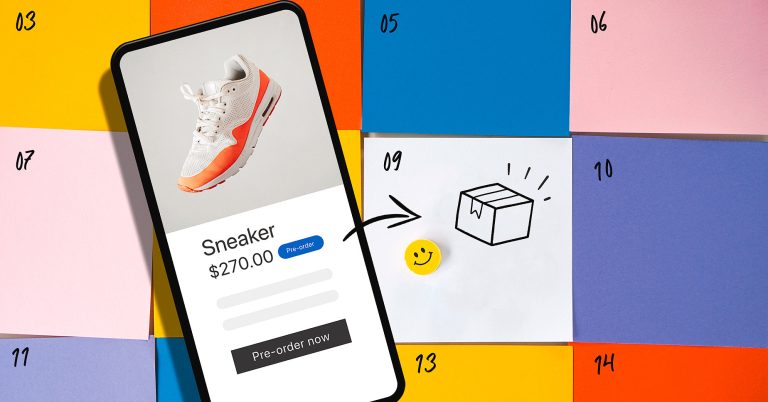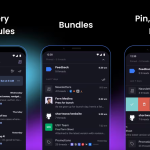“The waiting is the hardest part.” It isn’t just a song lyric—when it comes to ecommerce, merchants are looking for ways to accelerate the shopping experience, increase sales, and get more products into the hands of people who want them, faster.
That’s what makes pre-orders such a powerful way to sell. Pre-orders allow you to increase sales and strengthen customer relationships by turning a potential sale into a purchase. They help give your business the clarity and visibility you need to better forecast revenue and predict demand, and let customers enjoy the age-old thrill of anticipating their new favorite product—your product—arriving at their doorstep.
Shopify makes it easy to enable pre-orders, so you can offer this exciting purchase option in your store today. This guide walks you through how pre-orders work and what makes them a good fit for your business, so you can stop waiting and start selling.
What does pre-order mean?
A pre-order is an order placed for an item that hasn’t been released or is not currently in stock. They’re shipped to the customer once available. Pre-orders allow customers to order products before they are available.
Whether the product is out-of-stock or soon to be launched, pre-orders act as a kind of reservation that guarantees customer access to it at its earliest possible availability, while helping you improve your cash flow, build customer loyalty, and better forecast demand.
Why pre-orders make sense for your business
Pre-order selling offers some major advantages that can deliver big benefits not only to your bottom line, but to your operations and your customer loyalty as well.
Increase sales
Customers have more options when shopping than ever before. Ecommerce has effectively put the entire world at their fingertips, and any product—from one-of-a-kind custom crafts to high-end premium luxury goods and electronics—is available with a single tap.
For retailers, this means competition has never been more fierce. If your product is unavailable or out-of-stock when shoppers want it, they’ll simply move on to the next store.
Pre-orders give you an edge, allowing you to lock-in more sales whether the merchandise is ready to ship or not. You have the power to never say “no” to a customer again, because now, when they’re ready to buy, you’re ready to sell (even if you’re not ready to ship).
Plus, pre-orders give you the flexibility to take payment in the form of a deposit, upfront, or once the item ships. This makes it easy to shape your strategy to fit your unique cash flow needs.
Forecast demand by meeting it
Pre-orders help turn uncertainty into insights by providing data about concrete demand that businesses can trust.
Selling a physical product inherently comes with risks. Whether you’ve invested in the research, design, and manufacturing of your products or you simply purchased inventory, retailers have a serious financial interest in understanding exactly how much demand exists for each product they offer.
If you’re a merchant looking to fine-tune and make final adjustments to your product before bringing it to market, pre-orders can help you understand exactly what customers prefer before your production run concludes. “Gut feelings” may work for some business geniuses, but for the rest of us, pre-orders provide a fantastic realistic picture of which sizes, colors, and options you should produce in order to meet existing customer demand and be able to ship within a reasonable timeframe.
The past few years have highlighted how supply chain issues can cause major problems for even the most established businesses. Pre-orders allow you to effectively forecast minimum product quantities required to fulfill your orders, helping reduce the risk involved with managing uncertain supply chains and storing idle inventory. You should also factor in this kind of large scale delay when estimating your shipping timelines.
Generate excitement and drive growth
Between targeted ads and the dozens of screens the average shopper sees each day, it can be hard for a retailer to break through the noise and grab their attention. This makes driving awareness and excitement about a new product release—or the return of a fan-favorite—especially difficult.
But just as movie trailers help create a slow burn of hype before a film’s release, pre-orders can serve to build excitement and anticipation for a product before it hits the shelves. Successful pre-order marketing campaigns follow many of the same cues as regular marketing campaigns, including:
Creating professional product imagery and copy. You can leverage factory samples, and even professional retouching services to create product imagery if none exists yet.
Offering pre-order incentives. Limited-time discounts, early access to release news and other products, and free customization are great ways to boost pre-order sales while generating excitement.
Promoting on paid and social media. Whichever digital platform your target audience uses the most, be sure to fill it with news about your pre-order.
In addition to generating buzz, offering exclusive pre-order access to customers on your mailing list or through a member loyalty program not only boosts the odds of these repeat shoppers converting, but also helps build brand loyalty and shows that you appreciate their business and understand what they want to buy.
Pre-order methods
Pay now
Pay now is the most common type of pre-order. The full sales price of the item is due at the time of the pre-order, and payment is collected like a normal purchase. You can almost think of it like a standard sale, but with an extended fulfillment time.
With pre-orders the customer will receive information explaining when they can expect the shipment.
Pay now pre-orders are great for businesses that want to:
Get paid up-front. If cash flow management is important to you, pay now helps ensure you always have the cash you need on hand.
Capture customers in the moment. Worried about missing out on a sale because an item is out of stock? Pay now lets you make the sale whenever shoppers are ready to buy.
Automatically update out-of-stock products. Many pre-order apps can be set to automatically accept pre-orders whenever a product goes out of stock, so fewer customers move on to a different seller.
Keep customers informed. Pay now pre-order site messaging can be customized to display additional information, like expected shipping dates.
Pay later
The other type of pre-order is pay later. This method lets customers make either a deposit or a payment-free “reservation” on a product, and then be billed for the remaining or full sales price once the item ships.
Pay later pre-orders are ideal for businesses that want to:
Capture orders for upcoming products that may be delayed. Pay later gives you more fulfillment flexibility when informing customers that a product will ship later than intended.
Test the market for new products. Pay later lets you gauge interest in a new product so you can produce the right amount.
Charge customers at fulfillment. If you want to customize your cash flow, pay later gives you the ability to bill customers before or after you pay your suppliers.
How to set up pre-orders on Shopify
Pre-orders are complex, and there’s rarely a single way of doing pre-orders that works for everyone. So we’ve partnered with our app ecosystem, and made it easy for them to build the best pre-order apps on our platform, ensuring that any pre-order app you install will work seamlessly with Shopify.
Our favorite pre-order apps
If you’re ready to start offering pre-orders on your Shopify storefront, we recommend these pre-orders apps available in the Shopify App Store.
All three are great, reliable apps that integrate seamlessly with Shopify—so choose the one that’s best for you! For more options, check out Shopify’s pre-order app collection.
Build your own custom pre-order solution
We’ve introduced pre-order APIs and tooling to make it easy for partners and developers to build new pre-order experiences directly within Shopify Checkout.
The good news? Merchants no longer have to choose between selling pre-order products and using Shopify’s checkout!
What real businesses love about Shopify pre-orders
We think selling pre-orders on Shopify is great—but don’t take our word for it. Check out what these actual merchants are saying.
“It’s such a useful tool to quantify product demand and set customer expectations, especially during this current era of supply chain shortages and logistics uncertainties. By having moneyless pre-orders, I can make long-term forecasts for demand and place orders with my vendors accordingly.”
– Endless Blading Co. makes precision, multi-setup inline skate frames. Endless Blading Co. uses PreProduct for pre-orders.
“We sell hundreds of different products and sometimes they go out of stock as the inventory is very difficult to manage. [Pre-Order Manager] has saved us on numerous occasions. The customer is fully aware they are ordering a product that is out of stock and what date it should come back into stock. It has eliminated a huge amount of customer service that we would otherwise have to do if we wanted to continue selling all our items.”
– EarthBits is a Zero Waste and Plastic Free Shop for makeup and cleaning products among other things. EarthBits uses Pre-Order Manager for pre-orders.
“With pre-orders on Shopify, we can flexibly launch products on schedule—some in stock and some on lead time—and ensure we can confidently forecast sales demand while allowing for some flexibility in our supply chain. This helped us achieve a 400% higher sell-through than we expected if we had had to wait to sell.”
– SPOKE is a leading menswear brand based in London, UK. SPOKE uses Purple Dot for pre-orders.
Ready to start selling pre-orders on Shopify? Visit the Shopify App Store today!
Pre-Orders FAQ
Can I sell pre-orders before I have produced my products?
No, your items should already be in production before offering them as a pre-order.
Can I still offer a pre-order if I’m not sure when my product will ship?
You must be able to suggest a reasonable timeframe in which your product will ship based on your understanding of your industry. If you do not list a date, your items must ship within 30 days.
Can I change my shipping date?
Yes. If you cannot ship within the stated time, you must provide a revised shipping date, and explain the customer’s rights to cancel or request a refund.






0 Comments